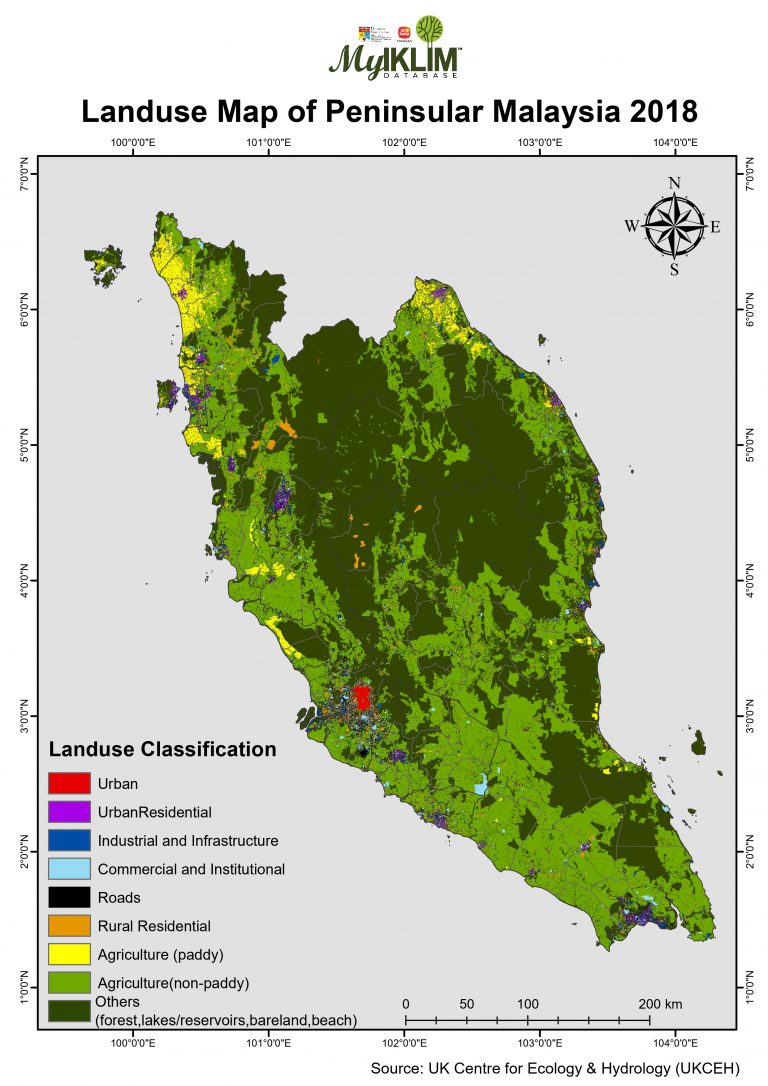The land use is based on detailed polygon land use data by state, obtained from PLANMalaysia (Department of Town and Country Planning, Malaysia). This polygon dataset was reclassified and rasterized. Gaps were infilled using the global CCI Land Cover map from the European Space Agency. Residential areas were split into rural and urban, as identified by the Global Human Settlement Urban Centre Database. Paddy fields were either derived from the detailed polygon land use data (where available) or located and vectorized by consulting rice cultivation maps. All analyses were completed in QGIS.
Gridded land use map of Peninsular Malaysia with a resolution of approximate 25 metres for the year 2018. The map includes nine different classes:
1) non-paddy agriculture,
2) paddy fields,
3) rural residential,
4) urban residential,
5) commercial/institutional,
6) industrial/infrastructure,
7) roads,
8) urban
9) others.
The land use map was created as part of a project researching areas of Peninsular Malaysia particularly vulnerable to flooding.
| TEMPORAL COVERAGE | : | 1 January 2018 until 31 December 2018 |
| TEMPORAL FREQUENCY | : | Annual |
| SPATIAL COVERAGE | : | Peninsular Malaysia |
| SPATIAL RESOLUTION | : | 25 m grid |
| VARIABLES | : | Land use classes |
Kaelin, A.; Miller, J.; Rehan, B.M.; Sayers, P.; Stewart, E.; Houghton-Carr, H.; Hasan-Basri, B. (2021). A land use map of Peninsular Malaysia for the year 2018 (25m grid). NERC Environmental Information Data Centre. https://doi.org/10.5285/36df244e-11c8-44bc-aa9b-79427123c42c MyIKLIM database. Available online: https://myiklimysd.ukm.my/lcsh_001_ukceh/ [accessed on: enter date]
| CONTACT PERSON | : | enquiries@ceh.ac.uk / Balqis Mohamed Rehan (UPM) |
| FUNDING INFORMATION | : | The land use map was created as part of the project “Malaysia – Flood Impact Across Scales”. The project is funded under the Newton-Ungku Omar Fund ‘Understanding of the Impacts of Hydrometeorological Hazards in South East Asia’ call. The grant was jointly awarded by the Natural Environment Research Council and the MYPAIR Scheme under the Ministry of Higher Education of Malaysia. |
| REFERENCE | : | https://doi.org/10.5285/36df244e-11c8-44bc-aa9b-79427123c42c |







